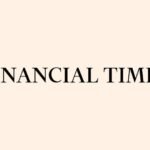Markets have held steady despite a series of potentially destabilising global developments, from the escalating conflict in the Middle East to renewed tariff shocks in the United States as well as increasing currency pressures in China.
The resilience is notable, but it may also reflect a market still trying to interpret how short-term events will influence longer-term fundamentals.
ADVERTISEMENT
CONTINUE READING BELOW
The most pressing geopolitical development came as the US launched airstrikes on three nuclear sites in Iran, escalating tensions that had already been simmering. This led to immediate concerns over the potential closure of the Strait of Hormuz, a narrow but critical passage through which nearly 20% of the world’s oil supply flows. Although Brent Crude rose modestly, the muted reaction suggests that markets are not yet pricing in sustained disruption.
Read: US attacks three nuclear sites in Iran
Still, this situation remains volatile. The potential for escalation remains high and, if realised, would almost certainly fuel inflation, disrupt global supply chains, and push central banks back into hawkish mode.
In parallel, the US-China economic front has grown increasingly tense. The Trump administration’s decision to impose steep tariffs is part of a broader return to protectionism under the banner of reviving domestic manufacturing. The tariffs now apply to a wide range of goods, including fridges, ovens, and washing machines, with potential spillover effects on inflation.
The fear is that the cumulative pressure of these tariffs will reverse some of the recent easing seen in US inflation data.
The Federal Reserve (Fed) seems to find itself in a bind. On the one hand, softer-than-expected inflation data for May suggests that price pressures may be easing. On the other hand, the inflationary effects of new tariffs (combined with the risk of geopolitical energy shocks) could delay or complicate the Fed’s rate-cutting agenda. Internal divisions at the Fed have become more public, with some members advocating for immediate rate cuts while others urge continued caution. This division reflects broader market uncertainty, with futures markets pricing in two rate cuts later this year, possibly starting in October.
China’s currency at centre of policy trilemma
Meanwhile, China faces its own dilemma. Its currency, the renminbi, sits at the centre of a policy trilemma: Should it be allowed to strengthen, depreciate, or remain stable? Each option has its own risk: A stronger renminbi could hurt China’s already weak domestic demand, while depreciation risks inflaming regional tensions and competitive devaluations.
Currency stability is Beijing’s current preference but it is increasingly hard to sustain, especially as the dollar weakens and interest rate differentials grow.
Read: Global shift to bypass the dollar is gaining momentum in Asia
For the renminbi to appreciate credibly, China would need to shift its domestic policy stance to support consumer spending, reduce savings, and rebalance its investment-heavy economy. This would align with Beijing’s longer-term goals of increasing the international use of the renminbi and positioning it as a meaningful alternative in a multi-polar currency world. However, short-term domestic pressures continue to weigh heavily, and markets remain sceptical of any sudden shift.
ADVERTISEMENT:
CONTINUE READING BELOW
More liquid Eurobond market
Europe is also being drawn into this shifting global order – but in a different way. Amid pressure from the US and rising economic nationalism, European Union leaders are pushing for deeper integration of the single market and financial infrastructure.
Proposals for a savings and investment union (aimed at channelling European capital into European priorities) are gaining traction. At the same time, European policymakers are calling for the expansion of the euro’s international role, with ambitions to create a deeper, more liquid Eurobond Market that can rival the dominance of US Treasuries.
Taking all the above into account, these developments point to a world in transition.
Markets may appear calm but the underlying dynamics suggest that we are approaching a turning point. Whether it is war in the Middle East, tariff walls in the US, or strategic financial shifts in Europe and China, the coming months will likely define the shape of global capital flows, interest rate paths, and inflation expectations.
For investors, it is not just about reacting to headlines; it is about anticipating how today’s uncertainty translates into tomorrow’s risk and opportunity.
Dr Francois Stofberg is a financial well-being economist at the Efficient Group.
Follow Moneyweb’s in-depth finance and business news on WhatsApp here.





















